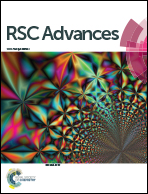Central composite design approach towards optimization of super activated carbons from bamboo for hydrogen storage
Abstract
Super activated carbons (ACs) were prepared by KOH activation from the moso bamboo and central composite design (CCD) methods were chosen for the experimental design to determine optimum responses by investigating the influence of the activation condition parameters, weight ratio of KOH/precursor (W) and activation temperature (T). Quadratic models were developed to predict the maximum specific surface areas (SBET) and micropore volume (VDR), and then the hydrogen storage performance. The results showed that the developed AC had outstanding hydrogen storage capacity, being among the highest hydrogen storage capacities in ACs so far. The analysis of variance (ANOVA) showed that the developed models for SBET and VDR gave a good prediction at 95% confidence level. The chosen models and individual parameters are appropriate for the prediction of SBET and VDR. The maximum values of SBET and VDR prepared under optimum conditions (W = 4.6 and T = 824 °C) are 3250 m2 g−1 and 1.01 cm3 g−1, corresponding to hydrogen storage capacities of 6.8 wt% at 5 Mpa and 2.8 wt% at 1 bar, both at 77 K.


 Please wait while we load your content...
Please wait while we load your content...